Scientific name
Pseudaspidimerus trinotatus (Thunberg) [=Pseudaspidimerus
circumflexa (Motschulsky), P. circumflexa var. testaceus Weise]
Taxonomic position
Coleoptera: Coccinellidae: Coccinellinae: Aspidimerini
Diagnosis
Body outline oblong oval, moderately convex. Dorsal side variable, uniform orange-yellow or with three spots on elytra; females often with lemon yellow head. Ventral side reddish brown, metaventrite and abdominal ventrite 1 often darker reddish brown. Antenna short, nine-segmented. Head with gena shortly extending over eyes. Prosternal process raised and at a plane higher than rest of prosternum, rectangular. Anterior margin of mesoventrite shallowly emarginate. Abdomen with six visible ventrites. Abdominal postcoxal line incomplete, posterior margin of abdominal ventrite 1 semicircularly produced in the middle. Two other species, P. flaviceps (Walker) and P. mauliki Kapur, are closely related to P. trinotatus in general appearance and can be separated reliably only by the male genitalia. In northeastern India, P. mauliki appears to be occurring with P. trinotatus in the field whereas in peninsular India and Sri Lanka, P. flaviceps and P. trinotatus occur together. P. flaviceps has a more compact, less elongate prosternal process compared to that of P. trinotatus and the penis (=sipho) of its male genitalia has a large, bulbous or balloon-like capsule.
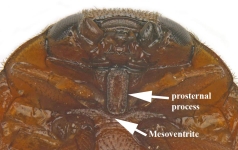 Prosternal process and mesoventrite Prosternal process and mesoventrite
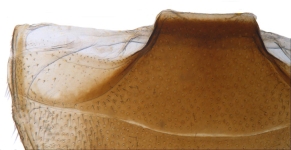 Abdominal postcoxal line Abdominal postcoxal line
Images
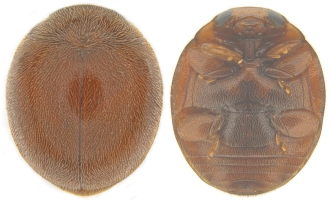 Adult male, dorsal and ventral view Adult male, dorsal and ventral view
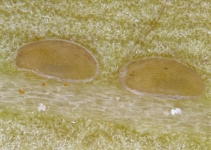
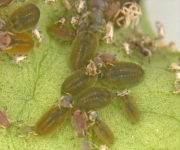
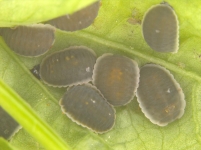
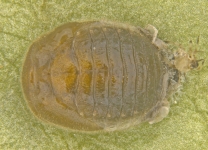 Immature stages: Egg, early instar larvae, mature larvae and pupa Immature stages: Egg, early instar larvae, mature larvae and pupa
Distribution
Widely distributed throughout India (Assam, Kerala, Karnataka, Andaman & Nicobar Islands, West Bengal, Goa, Maharashtra); Sri Lanka; Bangladesh; Myanmar (Burma).
Hosts / Biology
Aphidophagous. Commonly found in association with aphid species such as Aphis nerii, Aphis spiraecola, Aphis gossypii and other aphids on nerium, cotton, sugarcane, etc.
References
- Kapur, A.P. 1948. A revision of the tribe Aspidimerini Weise (Coleoptera: Coccinellidae). Transactions of the Royal Entomological Society of London, 99: 77-128.
- Poddar, S.C. and Ghosh, A.K. 1984. Bionomics of an aphidophagous coccinellid predator Pseudaspidimerus circumflexa (Motschulsky) (Coccinellidae: Aspidimerini). Records of the Zoological
Survey of India, 81: 67-76.
- Pushpaveni, G. and Krishnamurty, M.M. 1971. Records of a new predator, Pseudaspidimerus circumflexa (Motschulsky) var. testaceus (Weise) on sugarcane aphid. Indian Journal of
Entomology, 33(4): 465.
|